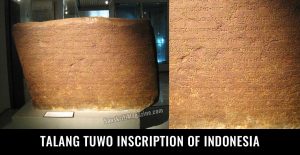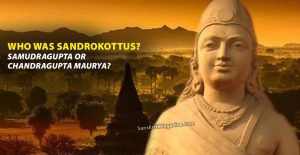
Talang Tuwo inscription of Indonesia
Talang Tuwo inscription is a 7th-century Srivijaya inscription discovered by Louis Constant Westenenk on 17 November 1920, on the foot of Bukit Seguntang near Palembang,

Talang Tuwo inscription is a 7th-century Srivijaya inscription discovered by Louis Constant Westenenk on 17 November 1920, on the foot of Bukit Seguntang near Palembang,

The Yazh (Tamil: யாழ், also transliterated yaaḻ) is an Indian harp used in ancient Tamil music which was the ancestor of modern day veena. It

Alexander, during his invasion on Persian Empire and some parts of western India, has carried some Greek scholars like Baeto, Diognetos, Nearchos, Onesikritos, Aristoboulos, and

History makes us believe that it had been Raja Ramdev of Pandva dynasty first who built the original Martand temple in 3007 BC. devoted to

One of the greatest vyakarana shastra and veda pandit of Andhra Pradesh, India was Brahmasri Dandibhatla Vishwanatha Sastry from Rajahmundry. He was invited by few

The Pre Spanish history of Philippines was shrouded in mystery. Now the mist around the Philippines is clearing thanks to recent discoveries. The Spaniards, wherever

Hanuman Jayanti, the auspicious celebration of the birth of Lord Hanuman, is more than a

Uncovering the Power and Symbolism Behind a Beloved Name When we chant “Jai Hanuman!” we

Tomorrow, across India and beyond, millions will celebrate Hanuman Jayanti, the divine birth anniversary of

Celebrate the final day of Chaitra Navratri 2025 by honoring Maa Siddhidatri, the bestower of divine powers and wisdom. Discover her sacred story, powerful symbolism, and simple ways to involve the whole family in her worship.

On Day 8 of Chaitra Navratri 2025, worship Maa Mahagauri, the goddess of purity and peace. Discover her gentle story, significance, and how families can honor her with meaningful rituals and joyful reflection.

Sanskriti comes from the Sanskrit root “kr” which means to do or to make prefix “sam” is applied before it to convey a sense of embellishment. It means actions done for the holistic refinement and perfection all the potentialities within a human being.
Copyright © 2024. Sanskriti Magazine
Copyright © 2024. All rights reserved.